Last Updated on January 16, 2024 by Greg Gillson
Many people set up bird feeders for winter. Perhaps you never have, but are thinking about it. How do you set up a bird feeder in Texas?
This article is all about how and why to set up a winter bird feeder in Texas. It also tells you some of the birds you can expect and how to attract them to your feeder.
Texas is such a huge state that winter is not the same throughout the state. From what I have been told there are 3 regions where winters are quite different from each other.
In the northern part of the state (Dallas) winters are cold and ice and snow storms happen each winter.
In the central part of the state (Austin) winters are cool and rainy, but snow and ice is rare.
In the southern part of Texas (Houston) winters are pleasant and rather warm and dry.
This winter climate variation makes it more challenging to have just one article on bird feeding in Texas in winter, but I’ll try to do a good job.

Why feed winter birds in Texas?
Throughout much of Texas the winters are mild enough that birds can probably survive without help from people.
But surviving isn’t thriving. And in northern parts of Texas winters can have occasional severe weather.
So, feeding birds in winter can help them survive and thrive. And it’s not just about feeding birds, either. Often people who fed birds improve the landscaping in their yards. This benefits all birds, not just the ones that visit feeders.
It is the younger birds that often benefit the most from winter bird feeders. Birds in their first year have not gone through a full year of finding food. So they are inexperienced.
By late winter the seeds and fruit and berries are mostly gone. Insects are always in short supply in winter. Food becomes more difficult for birds to find. Thus, birds, young and old, will appreciate a well-stocked backyard winter bird feeder.
Watching birds at the feeder can supply you and your family with hours of joy. It brings peace of mind to observe the antics of birds at your feeder.
Bird feeders are also a great way to teach children or grandchildren about nature. Youths today are ever more so isolated from the outdoor experience. Viewing birds at the feeder provides a connection to nature that we all need.
What birds come to feeders in Texas in winter?
As we’ve discussed, Texas is large. And it sits at the intersection of Eastern and Western North American and Mexico.
Bird species are a mixture of all three areas. It was because of this that bird illustrator and author, Roger Tory Peterson, created a separate bird watching field guide just to Texas!
Many different birds come to winter bird feeders in Texas, depending upon where you live. But I will tell about a few that can be found widely throughout the state. For additional information see my article on common backyard birds of Texas. It covers additional birds that may be in your backyard but don’t come to feeders.
I will describe some of the most widespread winter feeder birds in Texas. I’ll also tell you what you can feed them to attract them to your yard.

Northern Cardinal:
This large colorful songbird is found throughout woodlands in the eastern United States and adjacent extreme southern Canada. They reach to westernmost Texas, and then across northern Mexico to southern Arizona.
These birds are residents, pairs staying year-round in the same location for the most part.
They sing nearly year-round with loud whistled phrases usually repeating 3 times, cheer cheer cheer or purty purty purty. They also have a loud chip note.
Males are bright red with large tail, sweeping crest, thick orange bill and black face. Females are shaped similarly, but buffier brown overall.
Northern Cardinals eat larger seeds, including sunflower seeds and safflower seeds from hopper and platform feeders.
 |
| House Sparrow Photo by Greg Gillson |
House Sparrow:
These Old World sparrows were introduced into the United States in the 1880’s and spread across the country.
They are found across Texas. They are found in cities and farms, wherever there are people. They live year round in the same area in noisy flocks.
Their calls are chirp notes, and their songs are these notes run together.
Pudgy with a large head and short tail, males are brown and chestnut above, gray below. Males in breeding plumage have a black mask and throat. In winter the black on the throat is reduced to just the chin area.
Females lack the black facial and throat marks. They have a brown crown with paler eyebrow stripe over the eye but are otherwise brown and gray.
House Sparrows eat smaller seeds in mixed birdseed that other native birds don’t seem to enjoy as much.
They have weaker feet so feed best at hopper and platform feeders. Many people don’t like these aggressive non-native birds at their feeders. So they offer black oil sunflower seeds in tube feeders to limit their numbers.
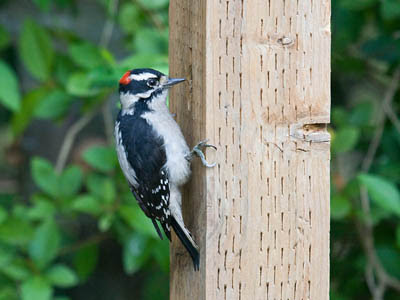 |
| Downy Woodpecker Photo by Greg Gillson |
Downy Woodpecker:
This cute little woodpecker is a frequent bird at backyard bird feeders throughout North America.
In Texas they are found more commonly in the northern and eastern parts of the state.
They are found in small diameter deciduous trees, such as willows and alders.
Usually found as solitary individuals or pairs, they give sharp pik calls and rattle these notes into a song in spring.
The bill is small for a woodpecker. They have a black and white pattern as do many woodpeckers. The back is white. The crown, ear coverts, and malar is black. There is a white stripe over and back from the eye and between the ear coverts and malar. Males have a small red spot on the rear of the crown.
Downy Woodpeckers will eat seeds or fruit at bird feeders, but especially seek out suet from special suet feeders.
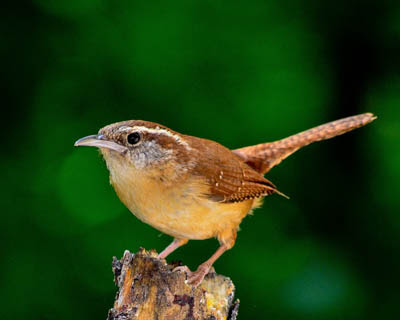 |
| Carolina Wren Image by SOARnet from Pixabay |
Carolina Wren:
This wren is a common resident in woodland tangles and backyards throughout the East.
In Texas it is found primarily in the eastern 2/3 of the state. Its breeding range expands and contracts in western and northern Texas (and elsewhere) following mild or harsh winters.
They sing all year, a loud musical teakettle, teakettle, teakettle or cheery cheery cheery. The call notes are loud and varied, including a chert call.
These have typical round wren bodies with short neck and long active tails. They are rich brown above, warm buffy below with a white throat and long white eyebrow strip back from the eye.
Carolina Wrens visit suet feeders.
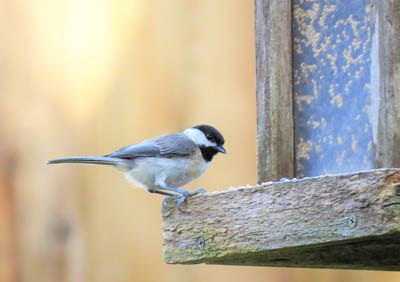 |
| Carolina Chickadee Image by George2 from Pixabay |
Carolina Chickadee:
This cute little bird is widespread throughout the southeastern United States in deciduous forests. It is found in backyards and woodlands the eastern half of Texas.
It gives a rapid chick-a-dee-dee-dee call and a whistled song fee-bee, fee-bay.
Gray back, wings, tail, and pale gray flanks. Black cap and throat contrasting with white face.
Carolina Chickadees like seeds, especially black oil sunflower seeds. They like suet, too. They eat from any kind of feeder.
 |
| Mourning Dove Photo by Greg Gillson |
Mourning Dove:
This bird is widespread across North America, including all of Texas. They are found in rural areas, especially near agricultural areas, and in residential areas, too.
The call is a loud mournful cooing.
This bird is identified by the plump body, small round head, and long pointed tail.
Mourning Doves eat black oil sunflower seeds and cracked corn and other grains. They feed on the ground and prefer platform feeders.
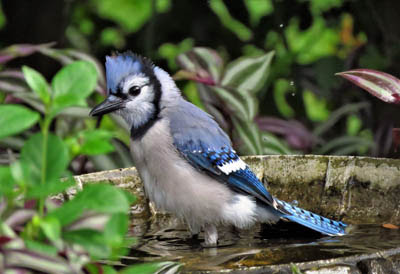 |
| Blue Jay Image bly skeeze from Pixabay |
Blue Jay:
Found in deciduous woodlands across eastern and central North America they are found in Texas away from the border with Mexico.
Gives a jay jay jay call.
Very colorful. Blue above, white or pale gray below. White face, blue crest, and black necklace wrapping around to the back of the head. White patches and black bars in the wing and tail.
Blue Jays are omnivorous. They like to eat sunflower seeds and peanuts from platform and hopper feeders. They eat suet from suet feeders, as well.
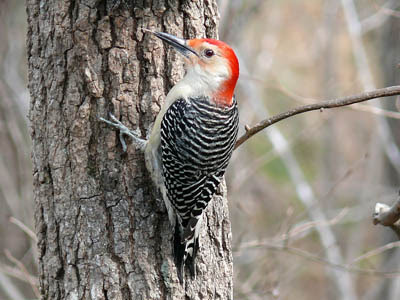 |
| Red-billed Woodpecker Image by skeeze from Pixabay |
Red-bellied Woodpecker:
This fairly large woodpecker is found in deciduous woods across the eastern United States. In Texas it is mostly confined to the eastern 1/3 of the state, but sometimes wanders to the northern half, as well.
The common call is a rolling churrr.
Pale gray below, the back is barred completely with black and white. Both sexes have a red nape, on the male it extends all the way over the crown to the bill.
Red-bellied Woodpeckers visit backyard feeders for sunflower seeds, peanuts, and suet. They eat from platform or large hopper feeders and suet cages.
 |
| White-winged Dove Photo by Greg Gillson |
White-winged Dove:
This large pigeon is a bird of the southwestern deserts. It is a resident through most of Texas. It is rare in easternmost Texas. In the Texas Panhandle these birds are primarily found in summer.
Their loud cooing sounds like who cooks for you?
Large with a rounded tail with white tips, the bird has large white wing crescents across the base of the primaries, especially visible in flight.
White-winged Doves love black oil sunflower seeds and cracked corn at platform or large hopper feeders.
 |
| Tufted Titmouse Image by anne773 from Pixabay |
Tufted Titmouse:
These woodland birds are common backyard visitors throughout the eastern United States.
In Texas they are found only in the eastern 1/3 of the state. However, the similar Black-crested Titmouse is resident in central and southwestern Texas. Where they meet they sometimes hybridize.
Sing a whistled song of Peter Peter Peter.
Tufted Timouses feed at hopper and tube feeders on black oil sunflower seeds. They also eat suet.
Wrapping Up
In interior and northern Texas, where winters are colder, I recommend adding a suet feeder to your regular seed feeders. If you’ve never fed suet before you should try it. Think of it as offering a giant grub for insect eating birds! The suet cages are inexpensive.
There are many types of suet to try, some in mixed variety packs. Wrens, titmouses, woodpeckers, chickadees, and some wintering warblers will eat suet.
I usually recommend a tube feeder with black oil sunflower seeds for finches and chickadees.
In the cooler areas of Texas, try a hopper feeder with an ample roof to keep rain and possible snow off the feeding tray. Fill this feeder with mixed seed, but make sure there’s plenty of black oil sunflower seed in the mix.
There’s no reason not to feed birds all year. But at least get your feeder set up and well-stocked by late October.
Birds move around in the fall, looking for a good food supply. By the end of the December birds have settled into their winter territory and won’t move around much. Thus, it may be hard to attract many new birds to your feeder after winter starts. Whatever birds are in your yard then are the birds you’ll have until spring.
Birds need water in the dry fall season. They also need open water during times of prolonged freezes that sometimes happen in more northerly parts of Texas.
Depending upon where you live you may wish to purchase a bird bath heater. If not, give birds fresh drinking water daily in freezing weather.
Frequently Asked Questions
Do birds stay in Texas in winter?
Whether birds stay in Texas in winter depends on several factors, including the bird species and the specific region of Texas they inhabit. Here’s a breakdown:
Resident birds:
Many bird species are year-round residents in Texas, meaning they stay put throughout the year. Examples include cardinals, blue jays, mockingbirds, and common grackles. These birds are adapted to the Texan climate, finding food and shelter throughout the year.
Migratory birds:
Texas is a major crossroads for bird migration, with hundreds of species passing through or wintering in the state. These birds breed in more northerly regions and migrate south as winter approaches, seeking milder temperatures and abundant food sources.
Wintering species:
Texas receives a diverse influx of migratory birds that spend the winter months within its borders. Examples include sandhill cranes, white-crowned sparrows, and northern shovelers. These birds find suitable habitat and food resources in various parts of the state, particularly along the coast and river valleys.
Regional variations:
The diversity of Texan landscapes and climates influences which birds stay or migrate. North Texas experiences colder winters, leading some species to migrate further south. However, South Texas boasts a subtropical climate, attracting even more wintering birds from colder regions.
What is the best bird food for birds in the winter?
The “best” bird food for wintering birds in Brisbane, Australia depends on several factors, including the specific species you’re hoping to attract and their dietary needs. However, here are some excellent options to consider:
High-energy foods:
Sunflower seeds: Black-oil sunflower seeds are packed with fat and calories, crucial for birds to maintain body temperature and energy levels during colder months.
Peanuts: Unsalted peanuts provide protein and fats, especially attractive to larger birds like butcherbirds and kookaburras. Offer them whole or crushed depending on the bird size.
Suet cakes: These fat-rich cakes are a winter favorite for many birds, offering a slow-release energy source. Choose suet cakes with nuts, fruits, or insects for added nutritional value.
Mealworms: Live or dried mealworms are a protein powerhouse, particularly appealing to insectivores like robins and wrens.
What is the bird law in Texas?
There isn’t a single, unified code titled “Bird Law” in Texas. However, various laws and regulations protect birds and their habitats in the state. Here’s an overview of some key aspects:
Federal Protections:
Migratory Bird Treaty Act: This federal law protects migratory birds across the US, including most bird species in Texas. It prohibits hunting, capturing, killing, or possessing migratory birds without a permit.
Bald and Golden Eagle Protection Act: This federal law specifically protects bald and golden eagles, their nests, and eggs.
State Laws:
Texas Parks and Wildlife Code: This code outlines regulations for hunting, trapping, and possessing game birds in Texas. It also protects non-game birds, prohibiting their capture, killing, or possession without a permit.
Texas Property Code: This code governs private property rights, including the ownership and management of wildlife on private land. Landowners can generally manage birds on their property, but must still adhere to relevant federal and state laws.
Specific regulations and permits:
Hunting permits: Texas Parks and Wildlife Department issues hunting permits for specific game bird species during designated seasons.
Bird banding permits: Researchers and birdwatchers can obtain permits for bird banding and other scientific studies.
Federal and state endangered species lists: Some bird species in Texas are listed as endangered or threatened under federal and state laws, receiving additional protection.
Here is a list of related articles I’ve written to help you with some specific questions on feeding winter birds in Texas.
The most common backyard birds in Texas
My recommended bird feeder setup
Bird seeds that attract the most birds
Different kinds of bird feeders and the birds they attract
Bird baths that birds actually use









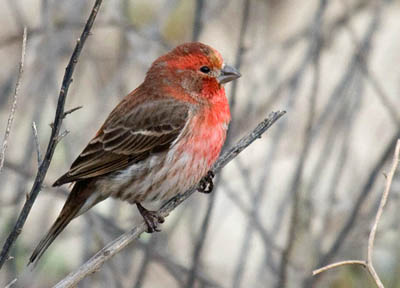
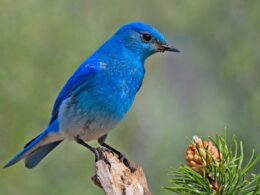
Thank you so much for your very informative article!
You are very welcome. Thanks for taking the time to comment.
Very helpful thank you!
Thank you for taking the time to say so. I appreciate it.
We have barred owls in the trees in backyard. I think the preyed on the white wing doves that used to nest and feed here. I would very much like to set up a feeding station but worry I will ultimately be feeding the owls. Is that a valid concern?
Predation by owls on bird feeders would be unusual. Most birds sleep at night. Owls tend to hunt animals that are out and active at night.
Barred Owls are a perch-and-pounce type hunter. They sit in a tree waiting for an animal to walk by, then they pounce. Songbirds that sleep all night would likely not make up a large prt of their diet.
The Northern Pygmy-Owl is a diurnal (day-time) hunting owl. They are more common in the conifer and mixed woods than in backyards, and they are found west of Texas.
We have not been able to identify a small bird with bright yellow “W’s” on their wings and tails. They are very aggressive and go after all the other birds in the feeder in North Texas. Any help identifying would be greatly appreciated
Pine Siskins are making a push into Texas, with large numbers in Dallas, Austin, and even Houston.
They do this every few years when the cone crop in northern forests has a poor season.
Thank you! Boy they are little devils! They don’t like to share.
Thanks for sharing your observations, Whowhatwho!
I've always found these birds willing to share. But maybe in such large numbers they are just overwhelming the other birds.
These birds are getting sick on both coasts–not unusual when so many birds gather together. State wildlife agencies of many states on East and West Coast recommend not feeding birds until April to help stop the avian epidemic at bird feeders (people can't catch it). In April, many of the siskins will have moved back north.
Recommended to wash bird feeders, perhaps with mild bleach solution, before putting feeders back up. Don't know if this applies to Texas, but always a good idea to clean and disinfect your feeders perhaps a couple times a year.
Have all those guys plus lesser finches , house finches and had a family of biweck wrens in my yard with 5 successful fleggins..a few hummingbirds still here too… i am in austin ..when i can i catch house sparrows and dispatch them
Good yard list, Eric.
House Sparrows and starlings are the only birds not protected by law in the US. However, causing their demise might earn you the ire of your neighbors! Probably not worth it.
Change your food to black oil sunflower seed in tube feeder, and Niger seed in a thistle feeder. The House Sparrows have a hard time perching on tube feeders and won't eat the "thistle."
Apprreciate your blog post